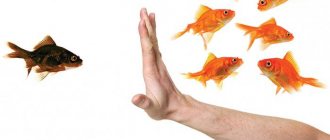What is “character”
In psychology, character refers to the totality of a person’s personal qualities that are formed as they grow older and are most clearly manifested in personal and public life. As a result, a specific style of behavior is formed in different life situations.
Psychologists divide character traits into 4 groups. This division is based on a person’s attitude to various aspects of life.
- Towards other people – isolation or sociability, deceit or truthfulness, respect or arrogance, etc.
- Towards oneself – modesty or vanity, arrogance or self-criticism, pride or humility, etc.
- To work – hard work or laziness, conscientiousness or carelessness, etc.
- To things – neatness or sloppiness, thrift or wastefulness, neatness or negligence, etc.
Since the main personality traits are formed in social life, the main aspect for understanding a person’s character is his relationships with other people. A person's character is also judged by his temperament. But it is important to distinguish between these concepts.
What is character
In fact, everyone has character. Translated from ancient Greek, this term literally means “sign”, “ feature ”, “ distinctive mark ”.
If we expand the definition, it turns out that character is a set of stable personality traits, properties of the psyche that determine a person’s behavior, reactions and other manifestations.
For example, in the same situation, people behave differently: a lonely, small kitten will evoke pity in someone and a desire to feed and warm it. Others will remain indifferent to the defenseless creature.
In the first case, a person is endowed with kindness, kindness, and the ability to sympathize with the misfortune of others - these are his distinctive features. In the second case they are absent.
Each person is endowed with his own unique set of characteristic features, so there are no two individuals who are absolutely identical in character. Even individuals who are very similar at first glance will still find differences among themselves.
How is temperament related to a person’s character?
A person’s character is a combination of his personal qualities, which can change and depend on the social environment in which the individual lives and develops. Temperament is an innate reaction to external stimuli. It does not change and remains constant throughout a person’s life.
Knowing the type of temperament, you can better understand the character of a person. However, a pronounced temperament is extremely rare. Most often, people have a mixed temperament, in which there will definitely be a dominant one.
It is customary to distinguish the following 4 types of temperament; on our website there are detailed articles devoted to each of them.
- Choleric. It is characterized by sudden changes in mood, emotional outbursts, impetuosity, passion, and imbalance. The nervous system of choleric people is characterized by unstable functioning. When a choleric person gets very involved in something, he very quickly uses up his own energy and becomes exhausted.
- Sanguine. This is the most sociable and lively of all temperament types. He needs new impressions, quickly reacts to events happening around him, and takes his own failures and other troubles lightly. When a sanguine person is interested in work, he works very productively and with great enthusiasm. In the opposite situation, he becomes frankly bored and is absolutely indifferent to the result.
- Phlegmatic person. He is distinguished by his equanimity and slowness. A phlegmatic person shows feelings extremely sparingly. He is constant in his preferences and habits and does not tolerate any changes. A phlegmatic person prefers monotonous work, which he performs diligently and without rushing.
- Melancholic. This is the most sensitive and vulnerable type of temperament. A melancholic person reacts sharply to various events and is prone to strong emotional experiences. With a favorable upbringing, melancholic people turn out to be outstanding figures in the arts and sciences.
If you can no longer change your temperament, then you can work on your character. First, you need to determine your character type and key traits.
Jung's teachings on introversion and extroversion
Carl Gustav Jung, a follower of Freud and the founder of his own branch of psychoanalysis, conventionally distinguished two types of character. We are talking about well-known extroverts and introverts. Representatives of the first category are more focused on the outside world. Extroverts adore the reality in which they live - it has great power over them. As for introverts, as we know, their psyche is turned inward. It is more difficult for them to concentrate attention on objects of external reality. In addition, Jung distinguished rational and irrational types. To the first type, Mikhail Yuryevich Radko points out, the psychoanalyst included the thinking and feeling subtypes of character. Their representatives perceive information on the basis of existing psychological attitudes. In contrast, those belonging to the irrational group perceive reality directly, relying only on those sensations that are relevant at the moment. Jung included the feeling and intuitive subspecies into this category.
Classification of character types
Scientists and psychologists have identified a large number of criteria for determining character type. I'll tell you about the main ones.
Typology according to Kretschmer
German psychologist Ernst Kretschmer classified character types depending on a person’s physique and identified 3 main ones.
- Picnics. People of this type of physique are prone to being overweight and even obese; they are rarely above average height. They have a small head with a short neck, a wide face with small features. They correspond to a character type called cyclotomy. These are people who are characterized by emotionality, sociability, who easily make contact and quickly adapt to changing conditions. The most common mental illness is manic-depressive psychosis.
- Asthenics. These include people of thin build, weak muscles, long arms and legs, and a long face. The character type of asthenics is schizothymic. They are characterized by stubbornness, seriousness and isolation. With mental disorders they are prone to schizophrenia.
- Athletics . These people are tall, broad-shouldered, muscular with a strong skeleton. The character type of athletes is ixothymic. They are characterized by restraint in facial expressions and gestures, calmness and restraint, authority and practicality. They do not like change because they do not adapt well to it. The most common mental disorder among athletes is epilepsy.
It is interesting that people of the same race have similar character traits. Thus, the Swedish professor Anders Retzius introduced the concept of the Nordic character, which was possessed by representatives of the Germanic race. These are tall and slender people with blue or gray eyes and light ash hair. They are persistent, cool-headed, reserved, reasonable and very observant. They know how to remain calm in any situation.
Typology according to Jung
Carl Gustav Jung is a Swiss psychiatrist who developed a typology of character, which is based on the predominance of a person’s internal or external world. He identified 2 types of people.
- Introverts. These are closed people, turned to their inner world. Such people are focused thinkers. They isolate themselves from the outside world, analyze everything carefully, and prefer loneliness. They have few friends, it is difficult for them to make new acquaintances and change their habits. They are characterized by suspiciousness and increased anxiety.
- Extroverts. These are sociable, sociable, open people. They have a lot of friends and acquaintances, they cannot stand loneliness, they love to travel and live to the fullest. They always become the life of the party, initiating meetings and parties.
Typology according to Lowen
American psychoanalyst Alexander Lowen compiled his typology of characters based on defensive patterns of human behavior. In total, he identified 5 types.
- Oral. Representatives of this type of character depend on the opinions of others and are afraid of being abandoned and rejected. They are characterized by strong dependence on other people, constantly in need of love, care and support, but they themselves are not ready to do anything.
- Masochistic. People with this type of character tend to complain, engage in self-flagellation, love to suffer themselves and torment other people. Everything that causes displeasure to others brings pleasure to the masochist. He doesn't trust anyone, often hates everyone and harbors a grudge.
- Hysterical. This type of character is characterized by reckless outbursts of emotions and theatrical behavior. Women of the hysterical type are distinguished by their overt coquetry, which is expressed in their gait, speech and gaze. Lack of discharge as a result of excess energy leads to anxiety. However, such people cannot remain in a state of balance for a long time. They perceive calmness as a boring and gray life and try in every possible way to recharge themselves, deliberately getting into various ambiguous situations.
- Narcissistic. This type of character is characteristic mainly of men. Its representatives are energetic, ambitious, self-confident and often arrogant. They achieve success in their professional activities, persistently achieve their goals, and are sexually attractive to the opposite sex. Their distinctive features are also pressure, aggressiveness and fight.
- Schizoid. People of this type of character are divorced from reality and cannot adequately express their emotions. They know how to love, but this feeling will not last long, since attempts to maintain contact cause strong internal tension in a schizoid person, which causes a break.
People who 100% fit the description of a particular character type are quite rare. Most often, character traits are intertwined and none stands out too clearly.
Types of character. Kretschmer classification
German psychiatrist Ernst Kretschmer believed that there is a direct relationship between personality traits and body features. Based on his own medical experience, information from the literature and even folk wisdom, he formulated several basic types, which Mikhail Yurievich Radko cites: • Asthenics. In appearance, they are usually tall and thin people with long limbs. They are characterized by isolation, seriousness, detachment from the world; they may have difficulty adjusting socially. They correspond to the schizothymic type of character. According to Kretschmer, representatives of this category have a predisposition to schizophrenia. • Athletics. A person belonging to this category is distinguished by tall or average height, a well-developed muscular system and harmonious proportions. Kretschmer attributed to athletes an ixothymic (“viscous”) type of character. Such people have a tendency towards leadership and power, self-confidence, restraint, and calmness. However, they may have trouble adjusting and expressing their emotions. • Picnics. These are often short or even short people with signs of being overweight or obese. They correspond to a cyclothymic character. Among their character traits, they are characterized by sociability, good nature, the ability to empathize, and sensitivity. These are very emotional people. In some cases, cyclothymic users may exhibit bipolar disorder. Radko Mikhail Yurievich notes that Kretschmer also identified such a subcategory as dysplastics. Its representatives have shapeless bodily outlines. Dysplastic patients may be prone to various psychological disorders.
What is accentuation
When individual character traits are overly enhanced, this is called character accentuation. From a psychological point of view, this condition is an extreme variant of the norm, and not a mental illness. However, at the same time, some character traits are sharpened and expressed so strongly that they lead to personality disharmony.
This feature leaves an imprint on a person’s behavior and actions, which is reflected in all areas of relationships: to oneself, to other people, to work, to things. Character accentuation is most common among adolescents. Thus, among the surveyed young people, 95% were found to have accentuation of varying degrees of severity. But among the older generation, the proportion of people with accents dropped to 60%. Because with age it is possible to smooth out undesirable character traits.
Character types with accentuation
Many scientists and psychologists have studied accentuation and tried to classify character type depending on this phenomenon. The typologies of A. E. Lichko and K. Leonhard gained the most popularity.
Classification according to Leonard
Karl Leonhard in his work “Accented Personalities” identified 10 main types and several intermediate ones.
- Hyperthymic – sociable, optimistic, energetic, proactive type of accentuation. Hyperthymic people are luck-oriented. They are characterized by developed facial expressions, a desire for active activity and new experiences. Often people of this type are irritable and frivolous.
- Disthymic is a closed, pessimistic person with a heightened sense of injustice. A dysthymic person feels discomfort in noisy companies. He has few friends, but he values them very highly. He is characterized by inhibition and low speed in decision making.
- An excitable person is a conflict-ridden person who is very difficult to communicate with. It is difficult for him to get along in a team, and in the family he behaves imperiously.
- A stuck person is a suspicious, intractable and touchy person. Such people love to teach others and often become the initiators of conflicts. They tend to place high demands on both themselves and others.
- Demonstrative - a self-confident, vain, boastful and hypocritical person. Such people love to weave intrigues and can easily adapt to any situation. They are characterized by artistry, courtesy, out-of-the-box thinking and self-centeredness.
- An anxious person is a timid, submissive, insecure person. He is characterized by self-criticism and friendliness. However, the lack of inner strength and will often makes such people the subject of ridicule and jokes. For the same reason, they try to avoid conflicts. And if they still had to get into an argument, they will look for support from others.
- Emotive – emotional and soft-hearted type of people. They are characterized by compassion and depth of feelings. They react sharply to everything that happens, but do not express their feelings, but accumulate them within themselves.
- Pedantic - an indecisive type of people who are afraid to lead, pay a lot of attention to little things and will never miss the opportunity to grumble. They are characterized by a fear of inconsistency with their own invented ideals.
- Exalted is a sincere, altruistic and impressionable person. Such people react violently to current events. From joyful events they easily become enthusiastic, and from sad events they become sad and even fall into despair. At the same time, they clearly express their emotions.
- Affectively labile is a type of accentuation in which a person is characterized by frequent mood changes. Therefore, when communicating with people, the way a labile person behaves can differ radically. Either he is hyper-communicative, or on the contrary, he is so withdrawn that you can’t get a word out of him.
Classification according to Lichko
Andrey Evgenievich Lichko identified the following types of accentuations.
- Hyperthymic is an energetic and sociable person who is constantly in a high mood. He cannot stand loneliness, monotonous surroundings, monotonous work, or idleness. He is characterized by a desire for risk, a frequent change of hobbies, as a result of which he does not complete the work he has begun.
- Cycloid is a type of accentuation characterized by cyclical changes in mood. For example, an elevated mood gives way to depression. Such changes do not occur abruptly and last up to about 2 weeks. People of this type are quite sociable and cheerful. However, during periods of low mood, they tend to give up on things.
- Labile is a sociable, good-natured and sincere person, whose main feature is a sharp and rapid change of mood. A labile person experiences severe mental pain when lost or separated from loved ones. He needs support and love. He likes to be in the role of a ward.
- Epileptoid is a scrupulous, meticulous, overly pedantic person. He is characterized by authoritarianism. He has a hard time experiencing material losses and insubordination of his personality. Sometimes he falls into periods of angry and irritable tension, during which he looks for an object to vent his anger. When intoxicated, he becomes angry and aggressive. Most often found in guys.
- Hysterical is an egocentric, communicative and proactive type of character. People of this type crave to be the center of attention. They are quite artistic, easily get used to any role they come up with, and are capable of self-deception. Most often, this type of character manifests itself in girls.
- Psychasthenic – self-critical, prone to introspection, but at the same time a reliable person. It is difficult for him to make decisions and take responsibility for himself and others. He is characterized by prudence and an even mood.
- Schizoid is a closed and taciturn person. It is difficult for such people to establish emotional contacts. Their inner world is closed to others. Alcohol helps schizoids make contact with other people easier and makes them more confident.
- Hypochondriacal – a serious, stubborn, withdrawn person. Has a tendency to increased fatigue and irritability. This type of person experiences sudden outbursts of rage over insignificant reasons.
- Sensitive - timid, shy, shy type of people. They tend to show kindness and mutual assistance. In difficult situations, they withdraw into themselves, become cautious and suspicious.
- Unstable - sociable, open, helpful, lazy person. Loves entertainment and idle pastime. They strive to get rid of someone's control. They have a tendency to drink alcohol and drugs.
- Conformal – a friendly, non-conflict, disciplined type of person. They strive to be “like everyone else.” They have a hard time experiencing changes in life and changes in their usual environment.
Typology
What it is?
When trying to classify people by character, a person’s relationship to the surrounding reality, to himself, and to the people around him can be taken as a starting point.
Typology of characters according to Leonard
Clinical classifications (such as, for example, the character typology according to Leonhard) take sharpened (accentuated) character traits as a basis.
Accentuation is a significant aggravation of certain personality elements and character traits; This condition is expressed in selective low resistance to certain influences on the personality with normal, sufficient, and sometimes increased resistance to others.
In accordance with Leonhard's theory, personality has basic traits (there are significantly fewer of them, but they form the basis, the “core” of personality) and additional, secondary ones. The main types of accentuations are included in the typology of characters according to K. Leonhard.
- Hyperthymic accentuation . Personalities of this type are sociable and are in high spirits most of the time. Such people are talkative, energetic, and prone to risk. They get down to business with enthusiasm, but are not inclined to finish what they start. In communication they are superficial, unnecessary; do not tolerate monotonous, monotonous work; not adapted to work under discipline.
- Dysthymic accentuation . In this case, a low mood background, a pessimistic attitude, and a focus on negative and sad aspects of life prevail. Such a person is prone to isolation, solitude and tries to avoid conflicts. Prefers to communicate with people who demonstrate friendliness towards them. Characteristic personality traits are conscientiousness, a serious attitude towards one’s obligations, and a sense of justice.
- Cycloid accentuation . Characterized by alternating phases of positive and negative attitudes. In moments of high mood, such a person is active and energetic, and in times of depression, he prefers solitude. The frequency of phase changes is different.
- Excitable accentuation . Slowness and passivity are replaced by outbreaks of irritability and loss of self-control. In a calm state, such a person usually demonstrates accuracy and pedantry. However, in case of emotional arousal, he loses self-control, shows aggressiveness, and provokes conflict. Due to such characteristics, these people are usually unstable in the team. In family life they occupy a position of power and can suppress household members.
- Stuck or paranoid accentuation . Characterized by suspiciousness, touchiness, vindictiveness, and stability of a negative emotional state. These people have a sense of social justice and a tendency to make higher demands on themselves and others. In everyday life - taciturn, conflict-ridden, does not tolerate other people's opinions, strives for dominance.
- Pedantic accentuation . Such a person rarely gets involved in conflicts. And if he gets involved, he ends up on the passive side of the conflict. Willingly cedes leadership to others. Strengths: conscientiousness, stability; negative side: a large number of formal requirements, boring.
- Anxious accentuation is manifested by extremely low contact and timidity, low mood, constant self-doubts, often unfounded. In uncomfortable situations, such a person seeks protection and support. In a calm state - friendly, obliging, self-critical. Often find themselves in the role of a so-called scapegoat; becomes a target for jokes in the team.
- Emotive accentuation . Characterized by selectivity, pickiness in contacts, and focus on a trusting relationship. Such people have a narrow social circle consisting of people whom they are accustomed to trust. They hide the resentment, “carry it within themselves.” They show a tendency towards increased sentimentality and vulnerability. They are characterized by a heightened sense of duty and strive to provide assistance.
- Demonstrative accentuation . Such people easily establish contacts, have a need for dominance and universal attention, fame and praise. In a team, they demonstrate easygoing behavior, are capable of intrigue, are distinguished by artistry, originality, non-standard thinking and actions, charisma and, at the same time, egocentrism, ambition, hypocrisy, inflated ambitions, and claims. The most important thing for this person is what impression he makes on others.
- Exalted accentuation . Manifests itself in sociability, heightened sensitivity, and sincerity. Mood and emotions are subject to momentary impulses. Such people are characterized by attachment to loved ones and friends, passion, empathy; emotional instability, mood swings, at times - a tendency to panic, rash, impulsive actions.
- Extroverted accentuation . Representatives of this group are surrounded by a large number of friends, cheerful and sociable, open to new information, talkative, do not strive for leadership, and yield it to others; often show frivolity and thoughtless actions; a tendency to spread rumors and gossip, lack of independence, a tendency to go with the flow, “to be like everyone else.”
- Introverted character . A representative of this group is the exact opposite of an extrovert. It is characterized by isolation, isolation from the social environment, secrecy, and increased vulnerability; He prefers loneliness and self-absorption to any communication. He does not tolerate interference in his life, protects it, and can give the impression of an unemotional idealist, incapable of emotional relationships with people. Characteristic: rigidity of thinking, always insists on his own, even if the fallacy of his opinion is obvious; perseverance.
Typology of characters A. E. Lichko
Studying various types of accentuations in adolescents, A. E. Lichko considered accentuations as a temporary state of the human psyche; according to his observations, as one grows older, traits that appear in the early stages may lose their sharpness, and over time they reappear with all clarity, especially in critical situations. Lichko's typology of characters identifies 11 types of accentuations.
- Hyperthymic type . The person is active and sociable, restless, and insufficiently disciplined. His studies are uneven, his mood is high. Able to enter into conflicts with adults. Has a variety of hobbies, all of them superficial. Overestimates his capabilities, self-confident, prone to bravado.
- Cycloid character type . Such a teenager is characterized by irritability; he prefers loneliness to the company of his peers. It’s hard to go through troubles, even the most insignificant ones; In response to a remark, aggression is possible. The background of the mood is changeable - from elated to depressed.
- Labile . The mood of such a teenager is changeable and unstable; such people are called unpredictable. Even the most insignificant circumstance can be a reason for a change in mood. Even for the most insignificant reason such a person can become despondent. When they are depressed, they need the support of those who can cheer them up and distract them. Such people feel very well the attitude of others towards them; their behavior depends on momentary emotions. The perception of the world around us often changes - from gloomy tones to light and rainbow ones.
- Astheno-neurotic type . The frequency of mood changes is 1 - 2 per month. Characterized by capriciousness, suspiciousness, suspicion, irritability and fatigue. These traits are most pronounced during intellectual stress.
- Sensitive type . Characteristic features are increased susceptibility to both joyful and sad events. Such people do not like large noisy companies and active games. In communication they can be meek and shy, especially in the presence of strangers. They are perceived by others as closed and very selective in their contacts. They are rarely open, only with those whom they know well and trust. They prefer to communicate with younger children or older ones. They are obedient, attached to their parents, adapt poorly to their peers, and are prone to developing an inferiority complex. A sense of duty is formed early, moral requirements for oneself and others are revealed, and complex types of activities are often chosen.
- Psychasthenic type . Characterized by accelerated early intellectual development. Teenagers are prone to introspection, thinking and evaluating other people's behavior. Self-confidence is combined with indecisiveness. Actions are often hasty, including in situations where caution and prudence are required.
- The schizoid type is characterized by poor communication skills and an undeveloped ability to empathize. Such teenagers avoid their peers and prefer solitude or the company of adults. Often demonstrate indifference to others, are not inclined to empathize or show interest in other people; live in their own world, full of fantasies, which, according to them, can be “difficult to express in words.” In external manifestations they are very restrained, which makes them look insincere and secretive; among their peers they are in the “exclusion zone”.
- Epileptoid . In childhood, such people often cry, “harassing” those around them, tease younger ones, mock those who are weaker, and early reveal cruel character traits. Characteristic: hypertrophied pride, imperiousness, even cruelty; in a company these are dictators, setting their own strict rules and demanding obedience. In conditions of a strict disciplinary regime, they feel comfortable, are able to threaten their superiors, and achieve advantages over their peers.
- Hysterical . Such teenagers stand out among their peers for their constant thirst for attention. Their psychology is self-centered. They have strong inclinations towards posing and theatricality. They cannot stand it when someone is praised in their presence, or when someone gets more attention than themselves. Attracting everyone's attention and praise to oneself in any way becomes the main goal of one's actions. These people claim an exceptional position among their peers; to achieve this, they take on the role of “ringleader” and work a lot for the public.
- Unstable type . Such teenagers are prone to idleness, entertainment and idleness. There are no stable interests, including professional ones. Such people are called “weak-willed”, “weak-willed”.
- Conformal type . The main feature is the so-called opportunistic behavior. A person, without thinking, blindly, submits to the opinion of the majority or the authority of an individual. This is an opportunistic type, capable of abandoning his beliefs for the sake of his current interests; always finds moral justification for his actions.
Some researchers in the field of psychology build a typology of characters on the basis that they associate certain character traits with constitutional characteristics, for example, the Kretschmer classification. This typology is based on the fact that the type of body structure in a certain way corresponds to a person’s propensities for certain mental illnesses. For example, asthenics and athletes are most prone to schizophrenic syndromes (schizothymic personality type), and picnics are most prone to manic-depressive psychosis (cyclothymic type).
Typology of characters according to Kretschmer (constitutional typology)
- Asthenic type . These are tall, thin people with a narrow shoulder girdle, thin skin, underdeveloped muscles and fatty tissue.
- Athletic type . Developed skeleton, highly developed muscles. Height is average or above average. Wide shoulder girdle and chest.
- Picnic type . The internal cavities of the body are highly developed. Muscles and musculoskeletal system are poorly developed, prone to obesity. Average height.
Kretschmer's typology is compiled in a purely speculative manner, but it contains quite truthful observations.
Three-component structure of personality behavior
This concept was supplemented by Kretschmer's personality typology; the theory belongs to N.N. Obozov and includes cognitive (cognitive), affective (sensual) and practical (transformative) components.
- Thinker . It is characterized by a focus on thinking about life, science and art; loves puzzles and logic problems; concentrated, not sociable.
- Companion . Communication-oriented, establishing contacts, witty, loves company.
- Practitioner . A man of action; cannot stand unfinished business, empty reasoning; loves clearly defined tasks and decisive actions; good organizer.
Theory of K. Jung
This classification has become quite widespread in psychology. It is based on whether people belong to either an extroverted or introverted type. Extroverts are most characterized by initiative, flexibility of thinking and behavioral reactions, and communication skills; An introvert is characterized by a fixation of interests on his own inner world, isolation and unsociability, a tendency to introspection; such people experience significant difficulties in adaptation.
A person receives information through the following channels:
- Feel;
- intuition;
- objective logic;
- subjective feeling.
According to Carl Jung's theory, people use all of the above channels in life, but each individual uses different functions with varying success and effectiveness. The function that is used more often and more successfully than others is called dominant. According to the author, the dominant function is so important that it sets the tone for the entire complex of human behavioral reactions. Thus, eight psychological types were derived, united in Jung’s classification.
Typology according to Jung
- Extroverted feeling type . These are people with an extremely acute “sense of fact”, people of tangible reality, not prone to passivity and reflection, and not having power-hungry inclinations. The constant motive of such a person is to sense the object, receiving sensory impressions that are as pleasant as possible. All his emotions are based on the tactile features of the object. They tend to demonstrate their refined taste.
- Introverted feeling type . Unlike the extroverted sensation, this type focuses on the intensity of subjective sensations and is distinguished by calmness and passivity.
- Extroverted intuitive type . has a keen sense of everything that has certain prospects. Always in the process of searching for opportunities. A dynamic personality who takes on new endeavors too intensely, sometimes with overly expressed enthusiasm. Among representatives of this type, women are more common; Intuitive activity is more evident in social life than in the professional sphere.
- Introverted intuitive . Quite a peculiar type. A sort of mystic dreamer; on the one hand, a visionary-visionary, on the other, an esthete-artist. The dreamer contemplates, but the artist, not of this world, creates extraordinary things that are insignificant and banal at the same time. Such a person often considers himself an unrecognized genius and appears as such to those around him.
- Extroverted thinker . This is a person who makes his entire life dependent on intellectual conclusions. Such a person attaches the greatest importance to objective reality. The thinking of representatives of this psychotype is very positive and productive.
- Introverted thinker . A person belonging to this type is silent and unsociable, encounters people who do not understand him, and, thanks to this, becomes convinced of the “impenetrable stupidity” of people. Thinking is aimed at understanding one’s inner world and its significance.
- Extroverted Feeler . The features of this psychotype are most characteristic of female psychology; these people live guided by their own feelings and emotions.
- Introverted Feeler . As a rule, these people are silent, incomprehensible, hidden under a banal, sometimes infantile, mask. May have a melancholic temperament; invisible in the team.
Character classification according to K. Horney
Emphasizes the importance of socio-cultural moments in the formation of character traits.
- Compliant type . Characterized by a people-oriented attitude that creates helplessness. In any situation he prefers to give in.
- Separate type . The defensive attitude “I don’t care” has been formed.
- Hostile type . Oriented against people. A priori hostile. Strives for dominance.
Typology of character by E. Fromm
The name of this author is associated with the concept of “social character,” which is understood as a set of personality traits refracted in historically established social relations. According to Fromm's theory, there are 5 stable character types:
- Receptive type . Such a person is convinced that everything necessary must be gleaned from outside; seeks support; in relationships, these people are very sensitive to lack of attention. He looks at life with optimism and is friendly until a threat arises.
- Operating type . Feels affection only for those who can give something; prefers to get everything through force, is capable of stealing ideas, passing them off as his own. He is caustic, sarcastic, suspicious, cynical, envious, and inclined to appropriate what others have.
- Cumulative type . He doesn't like expenses; they make him anxious. Stinginess extends both to material values and to feelings and thoughts. Pedantic, clean, obsessively punctual, stubborn.
- Market type . Such a person treats his own personality as a commodity to be bought and sold; is able to develop qualities that are in demand; there is no stable character. Market orientation extends to thinking. These people do not retain their individuality; thinking is reduced to “grasping” ideas for the purpose of successful manipulation.
- Productive type . Unlike the other four, which are unproductive, he is able to rationally use his strengths to realize his inherent potential. Such people do not necessarily become famous. He is simply able to think independently, respect himself and others, in a word, he enjoys life, does not experience anxiety, admires nature and art. Unproductive ones can be transformed into productive ones, for example, stubbornness - into perseverance, despoticism - into the ability to take the initiative.
In Fromm’s typology, in addition, three more modifications of a social nature are described:
- Masochist-sadist . This person tends to see the reasons for all his successes and failures in people, and not in objective reasons and social events. If it is necessary to remove an obstacle, he directs aggression towards the person whom he considers the cause of failure. Such a person is often engaged in self-education and self-improvement, and attempts to change people for the better; especially dangerous in a leadership position.
- Destroyer . Aggression and desire to eliminate an inconvenient object are clearly expressed. People who are anxious, helpless, disabled, physically or emotionally turn to destructiveness.
- Conformist automaton . Such a person in a critical situation ceases to be himself, meekly submits to the situation, to the requirements of a social group of any type, and quickly learns the “necessary” type of thinking and way of behavior; does not have his own opinion and social position; conscious or unconscious opportunist.
When accentuation becomes a pathology
On the one hand, an accentuated character trait can make a person successful, but on the other hand, it is his weak spot. Thus, people of the hysterical type can become talented actors. However, they are very afraid of ridicule and, in a negative situation, are prone to demonstrative suicide.
Therefore, there is always a high risk that in difficult situations, accentuation will develop into neurosis or psychopathy and become the cause of alcoholism, drug addiction, and crime. The reasons for the manifestation of character accentuation can be both hereditary factors and the characteristics of the child’s upbringing.







